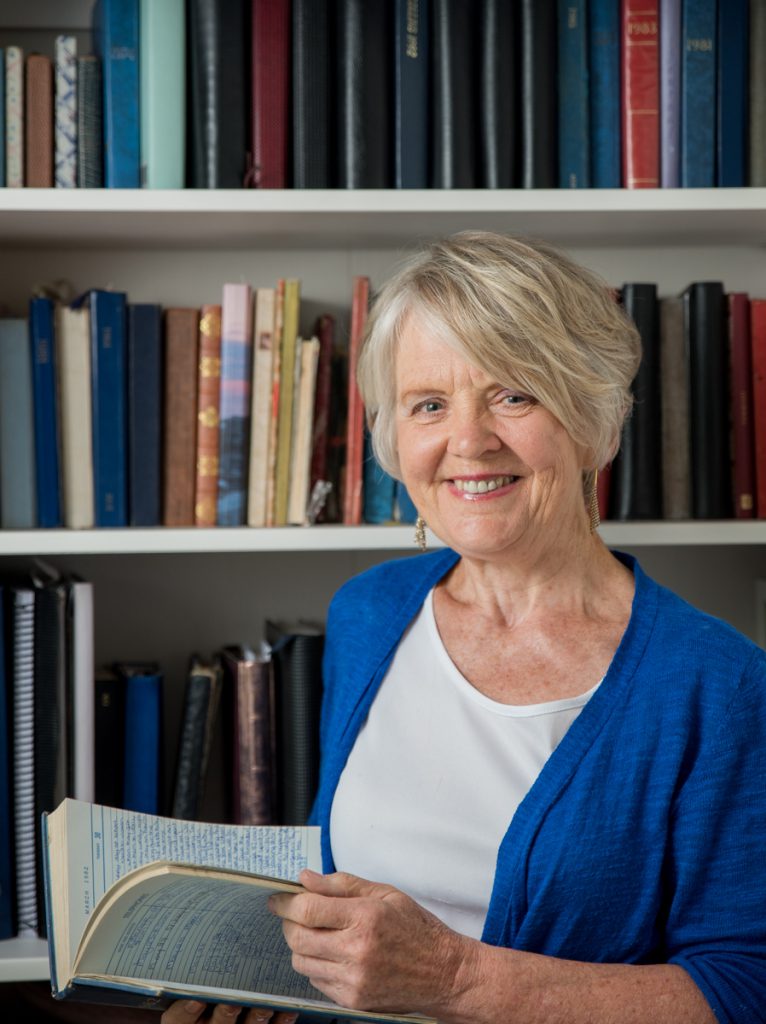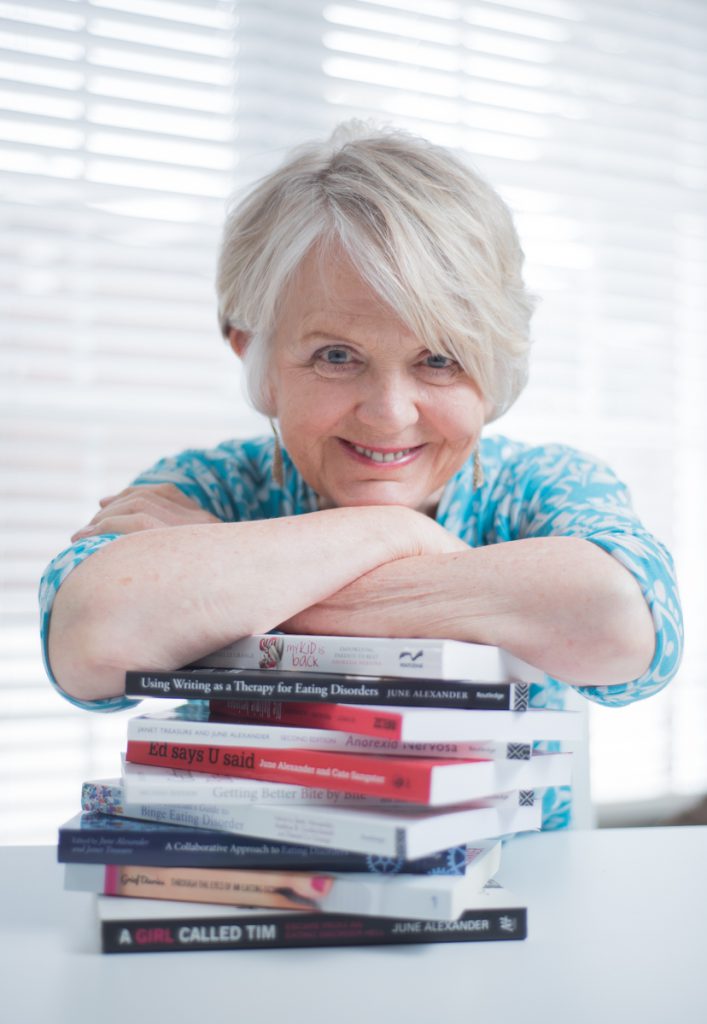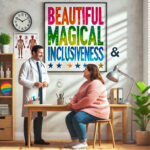The Role of the Diary
Today’s diary is tomorrow’s history
My first diary, a gift for Christmas in 1962, was a small book with the word ‘Diary’ embossed on the front cover.
Inside, an introductory 15 pages contained information considered useful for the 1963 diarist.
Items included a calendar for this year and next, postage rates for mailing letters and parcels at home and overseas, phases of the moon, the rising and setting times of the sun, a list of feasts and holidays, times in various parts of the world, first aid instructions, tables of weights and measures, several pages for names, addresses and telephone numbers, and a page for personal memoranda. Next came the really exciting part: 365 blank pages, each page dated, each with 20 lines to be filled. Then, much to my delight, I found a few extra, undated pages at the back of the diary. Those pages appeared as an irresistible invitation to share daily observations immediately. I could not help but respond, squeezing in as many words as I could between December 25th and January 1st.
This is how my relationship with the diary began. More than 50 years on, it remains steadfast.
We have grown up and aged together. In 2024, the National Library of Australia acquired my diaries, and you can arrange to visit them there.

Scottish historian Sir Walter Scott (1771-1832) described the diary as a document of use to the person who writes it and an invaluable and treasured learning tool for those who read and study it in centuries to come.
Scott was in his fifties when he began to keep a regular diary, and wished he had started sooner:
[Edinburgh,] November 20, 1825.—I have all my life regretted that I did not keep a regular journal. I have myself lost recollection of much that was interesting, and I have deprived my family and the public of some curious information, by not carrying this resolution into effect.
~ Walter Scott’s journal
In his diary, on April 13, 1827, Scott reflected on why he managed to write as regularly as he did, and concluded that writing in the first person was the “very essence” of a diary, and that it was writing about the self that provided perseverance for the task.
Generations of diarists, like Scott, have found the process of diary writing helpful in searching for and understanding self. Anais Nin began writing a diary at age 11, in 1914, and continued for more than 60 years. From an early age she developed an intimate relationship with her diary, initially calling herself ‘Linotte’, as illustrated by this excerpt from Linotte: The Early Diary of Anais Nin (1914-1920):
March 22, 1919: I have just opened a new notebook and made a new friend. I have just closed a notebook which is already full, and here I am face to face with one with blank pages to fill, and I hope with all my heart to be able to write things in it that I shall never be ashamed of. After a few days, dear new notebook, you will know me very well and will become acquainted with my ideas and the meanderings of my mad imagination. I shall try to write faithfully and sincerely every day and you will take your place with my other diaries…
The process of connecting mind, pen and paper
was something I did not think about
I just did it.
The entry for January 1st, 1963, is crammed with extremely detailed accounts of food consumed, of exercise taken, the time of awakening and going to bed, and the cricket results (Australia playing England in a test cricket series at the Melbourne Cricket Ground).
Other entries in this first year of diary writing include matter-of-fact mention of friends and family and a range of observations including the weather, the start of secondary school education in seventh grade, my father’s seasonal farming activities, the number of hen eggs collected, and the days in the week on which I have a bath or wash my hair. Factual, practical observations abound, but expression of emotion, confusion, or insight is scarce.
Nonetheless the diary and I had bonded immediately and as adolescence ensued, thoughts and feelings began to be expressed. Confining myself to one page a day was sometimes a challenge, my handwriting getting smaller and smaller as the end of the page approached. For me, getting the words on paper was more important than neatness or appearance.
The words tumbled out, a reflection of thoughts and feelings on any given day or moment. The diary became a confidante. My world was small. There was the diary, and there was me.
Not for many years would I learn that the diary’s influence extended far beyond the two of us.


English-speaking world
In England the first known diaries date from the latter part of Europe’s medieval period, or Middle Ages, regarded as lasting from the end of the 5thCentury AD to the 15th Century AD. Men wrote most diaries that survive from this period, which was a time when feudalism and the spread of Christianity had helped to preserve social order and maintain stability. Apart from people with key roles in the Church, literacy was almost non-existent and any documents were hand-written until the invention of the printing press in the early 14thCentury. Such documents related mostly to religious life, laws, and administrative details. The diary evolved more widely as the practice of record keeping spread and writers began to note personal reflections and observations, in addition to historical facts, figures, and appointments.
Initially, only a small number of people, for example, aristocrats who were monks or nuns or who were educated at university or townspeople who ran businesses, were literate and therefore had the opportunity to preserve records that would show future generations what life was like for them. This void in diary-writing opportunity began to be addressed in the early modern period, 1500 to 1700, following two major developments. One development was the widespread opportunity for people to access formal education, which led to increased literacy. The other development was Protestant Reformation, which brought with it social upheavals and the rise of individualism. People from all walks of life, including peasantry, began to consider their life in relation to self and others, beyond the spiritual or religious bonds of the Church. At the same time, the boundaries of life became exposed and the future less uncertain. Devotional diaries of the mid to late 17th Century were often deeply introspective and self-deprecating, reflecting a striving to find new meaning in this life and the next.
While the earliest diaries in Japan, for instance, evolved in a period of cultural enlightenment, in medieval Europe and England the diary emerged from darker layers of silence and secrecy surrounding attempts to preserve pagan wisdom and witchcraft. Such diaries in early modern England were considered to be troublemaking and if found, both diarist and diary were likely to be destroyed (Rainer, 2004). From this background, by the 17th Century, the diary was providing a more pious role, becoming a place to discipline oneself in serving God, and diarists such as English civil servant Samuel Pepys began developing the trend to describe daily observations and account for one’s life.
Increased independence meant people had to think more about how they behaved, their morals, values and religious beliefs, and what life they wanted. Writing a diary provided people with a way of achieving self-understanding, of working out who they were in adapting to the impact of capitalism, including individualism, of nationalism and industrialism that became distinguishing features of modern society.
Almanacs
Printed almanacs, which preceded the diary, were especially popular in the second half of the 16th Century in England(Smyth, 2008). People used almanacs as a tool to organise and plan their lives, recording and often adding hand-written notes relating to family births and deaths, health issues, weather, travel, accounting, employment and legal issues, and husbandry (Mackrill, 2011). The almanac, with its chronologies and dates, also had the effect of encouraging readers to consider time and their relationship with it. Diaries evolved as this source of raw material was moved from one text to another, all the time undergoing an enriching process of revision and amendment. Many diaries of this time, therefore, were primarily the result of rewriting prior texts rather than directly relating the spontaneous and uncensored description of real-time daily life (Smyth, 2008, p. 205).
The Samuel Pepys diary (1660-1669) contrasts with earlier diaries and others of the time which were primarily factual, a tool for noting, planning and classifying events. Pepys, besides using the diary to confess his sins described minute details of daily life, like what time he got up in the morning. His candid and astute observations and opinions of everyday events and of people around him, and of social and political occasions, provide insight into emotions and thoughts, hopes and fears, felt during a period of major, social, cultural, economic and ideological change. The diary then, was starting to emerge, with different meanings and purposes for different people.
Scholars were among the first to use the diary for self-expression and as an outlet for individualistic thinking (McKay, 2005). Education, together with increased access to paper and pen, paved the way for them to join the trend in chronicling private life. Beyond academic and religious circles, diary writing also became a practice among the male-dominated military and naval occupations. For women who had literary skills and took up diary writing, religion was a major reason for doing so. As the popularity of diary writing spread more widely among women, and indeed among women and men from all social classes, diarists discovered the diary could be a confidant and outlet for mental and emotional stresses that could not be safely shared with others, or managed through religious-based discipline.
Pioneering
When the English ventured overseas to explore, trade goods, and create new settlements, the diary went with them. With the establishment of European communities in North America in the mid to late 1600s, and in Australia a century later, the diary served as a recording and observational tool. While men used the diary for largely practical reasons, pioneering women found it helpful emotionally in adjusting to what were often harsh, and different, living conditions. The diary became a resource for coping with the loneliness and often challenging demands of the new environment, and in striving to cultivate a sense of identity, orderliness, and self-worth.
The period referred to as romanticism, in the last decades of the 18th Century and first decades of the 19th Century, marked a renewed boost in literacy rates and the diary, besides serving as a confidant, increasingly became a resource for reflection and recollection. Women, especially, were turning to reading romantic novels and were writing more. The transition from religious moralism to romanticism was not seamless, however, with the development of a sound moral character becoming a preoccupation in the 19th Century, particularly among the middle class. Diaries took on new roles in monitoring good behaviour and recording evidence of the high moral standards of one’s own behaviour. Adolescents, especially girls, were encouraged to keep a diary as a self-discipline tool. By now the diary’s role was extending beyond that of recording facts and keeping tabs on one’s accountability to God and religious beliefs, to becoming a treasured private record of observation and self-reflection. This process was an important step towards the development and pursuit of personal independence within both family group and community, and was intrinsic to being an individual.
Around the world
This book relates mostly to the English-speaking tradition of diary writing, but it is worth noting that long before diary-writing was developing in England, other related forms of record-keeping were taking place across other parts of Europe, in Middle Eastern and East Asian cultures. For example, in Japan a form of diary developed during that country’s Golden Age of art and literature, starting in the late 7th Century. As Rainer notes in The New Diary, by the 10thCentury the Japanese ladies of the royal court were exploring forms of personal expression rather than merely recording facts.
The personal struggle
The very nature of keeping a private diary, while influenced by the social, cultural, economic, and healthcare environment of the times, was for many a solitary and deeply personal process. In the 1870s, Catherine Currie and her husband John were pioneer settlers in Gippsland in eastern Victoria, Australia (Sheehan, 1999). For 30 years, Catherine kept a diary, describing the isolation she suffered and the many other challenges of living on the land and raising five children (one drowned at the age of five). She also wrote of the effects of two psychotic episodes. On 16 January 1894, after her first admission to a Melbourne mental asylum, Catherine wrote of her sons:
They are good boys but they care no more for me than I do for the old pig … I have never had their respect since Father shut me up in a Lunatic Asylum … tied in an old Corn Sack, is it any wonder I raved … I am always thinking of it when they vex me. I always put it down to that or I could have won their respect.
Sheehan, 1999, p. 928
Three years later, Catherine noted that she feels she is of ‘no more consequence than a log of wood … [I] only talk to my heavenly father … all I love think me mad’ (17 February 1897, qtd. in Sheehan,1999, p. 934). Perhaps social isolation led Catherine to write with total abandon. She knew little of literary disciplines or correct style, but her diaries represent an attempt to release and bring order to her thoughts. Catherine Currie may have felt misunderstood and unacknowledged in life but, in death, her diaries provide a rare insight into her life and sensibility, and the times in which she lived. Focused as she was on trying to make sense of her small world,
Currie was writing during a period when diary writing was starting to be considered a primarily feminine practice. Her diaries, along with others, have helped to trace and portray the development of feminist subjectivity (citations/sources), providing insights into perspectives, feelings, beliefs and desires unavailable in any other way.
Inspirational diarists
The works of writer Anais Nin (1903-1977) illustrate the diary’s progression to a preoccupation with the identity and nature of self and our interaction and relationship with the world around us. Nin penned her first diary entry at the age of 11 and continued the practice for more than 60 years.
Despite the diarist’s inability at times to express emotion, and despite the possible arousal of even more distressing emotion upon writing about painful experiences or reading about painful expressions, the diary remains a standout in providing a tool with which to safely release emotion. It also presents opportunity for insight into events the diarist has experienced, as well as their impacts and influence. Without the diary, such events may remain cold and lifeless. For instance, identity issues prevail in the early diaries of British feminist and pacifist Vera Brittain (1893-1970). As she enters adulthood and develops as a writer, concerns of intimacy and generatively (i.e., establishing and guiding the next generation) are explored (Weiss, 1985). Brittain’s memoir Testament of Youth, covering the period 1900-1925 and published in 1933, was based on her diaries, which detail life as a young woman in Europe during World War I. Diary-writing during the war had provided a refuge for offloading and sharing deep sadness brought about by events that seemed meaningless, and later provided a means for re-storying traumatic thoughts and experiences into some sort of manageable context.
American Susan Sontag, whose diaries comprised almost 100 notebooks, was among the first writers during the rise of feminism in the 1960s to raise the profile of the diary, as a document and genre worthy of respect in its own right (Maunsell, 2011). Living in an area with limited access to literary works, I was oblivious to this movement despite being an avid diary writer during this time.
My knowledge of other diarists was limited to Samuel Pepys and Anne Frank, who featured in school history lessons. Isolated and alone, I was nevertheless partaking in an individual and active process that maintained the diary’s primary role as a tool for self-expression, self-assessment, self-analysis, and self-discipline. Sontag used the practice of diary writing for her own self-fashioning (i.e., self-discovery and self-development) and continually honed her literary style, as well as her behavior, in aspiring to be both a better person and better writer. For Sontag, as for others including Virginia Woolf, Katherine Mansfield and Louise May Alcott, the bid to blend the inner and outer self was a lifelong process and fulfilling journey (Jensen, 2012). So it is for me.
The diary, as noted for instance in Lejeune’s On Diary, has been studied in many disciplines, including history, philosophy, medicine, genealogy, education, sociology, psychology, cultural anthropology and women’s studies and journalism. (e.g. An Early Settler in Sickness and in Health, by Sheehan). Its form also has been used in fiction for centuries with the stories sometimes being developed as movies (e.g. Robinson Crusoe by Defoe; Bridget Jones’s Diary, by Fielding).
The diary remains a useful source for detail unavailable in any other way. Without the perspectives of diarists, our knowledge of how people thought, felt, and behaved in the past, and insight into how they think, feel and behave today, would be poor indeed.
*The concepts of ‘diary’ and ‘journal’ are similar, each referring to the keeping of a daily record of experiences. In this book, the word ‘diary’ is predominant although the ‘journal’ may appear in quotes. A person who keeps a diary is a diarist.
References
Brittain, V. ([1933] 1994). Testament of youth: An autobiographical study of the years 1900-1925 NewYork: Penguin.
Defoe, D. (2014). Robinson Crusoe: Broadview Press.
Fielding, H. (1996). Bridget Jones’s diary: A novel(Vol. 1): Penguin.
Jensen, M. (2012). The writer’s diary as borderland: The public and private selves of Virginia Woolf, Katherine Mansfield and Louisa May Alcott. Life Writing, 9(3), 315-325. doi: 10.1080/14484528.2012.689952
Mackrill, T. (2011). Diaries. In L. L’Abate & L. G. Sweeney (Eds.), Research on writing approaches in mental health(pp. 55-65). Bingley, United Kingdom: Emerald Group Publishing.
Maunsell, J. B. (2011). The writer’s diary as device: The making of Susan Sontag in “Reborn: Early diaries 1947-1963” (Vol. 35, pp. 1-20): Indiana University Press.
McKay, E. (2005). English diarists: Gender, geography and occupation, 1500-1700. History, 90(298), 191-212.
Nin, A. (1931). Breaking through the “ideal” barrier. Diary.
Nin, A. (1987). The Diary of Anaïs Nin [excerpt] (Vol. 33, pp. 339): Twentieth Century Literature.
Nin, A., & Stuhlmann, G. (1966). The Diary of Anais Nin,[volume 1] 1931-1934: Swallow Press.
O’Sullivan, C. (2005). Diaries, on-line diaries, and the future loss to archives; or, blogs and the blogging bloggers who blog them. American Archivist, 68(1), 53-73.
Rainer, T. (2004). The new diary: How to use a journal for self-guidance and expanded creativity: JP Tarcher Los Angeles.
Sheehan, G. (1999). An early settler in sickness and in health. Australian & New Zealand Journal of Psychiatry, 33(6), 926-934.
Smyth, A. (2008). Almanacs, Annotators, and Life-Writing in Early Modern England (Vol. 38, pp. 200-244): Wiley-Blackwell.
This essay is an excerpt from my exegesis that, together with my creative work, comprised the research for my PhD titled Using Writing as a Therapy for Eating Disorders. The research explores the process and challenges associated with writing a non-fictional book about diary writing as a therapeutic tool. The published creative work, Using Writing as a Therapy for Eating Disorders – The Diary Healer, is available here.





